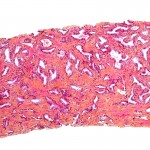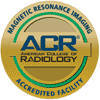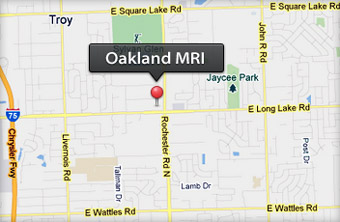 What is MRI/Ultrasound 3-D Fusion Biopsy? If an abnormality is detected on the MRI, we can now obtain a targeted biopsy of the suspicious region(s) with an MRI/Ultrasound 3-D Fusion Biopsy. This combines the tremendous anatomic detail of multi-parametric MRI with real-time ultrasound, allowing precise, image-driven prostate biopsies.
What is MRI/Ultrasound 3-D Fusion Biopsy? If an abnormality is detected on the MRI, we can now obtain a targeted biopsy of the suspicious region(s) with an MRI/Ultrasound 3-D Fusion Biopsy. This combines the tremendous anatomic detail of multi-parametric MRI with real-time ultrasound, allowing precise, image-driven prostate biopsies.
Standard TRUS Biopsy vs. MRI/Ultrasound 3-D Fusion Biopsy
A standard transrectal ultrasound (TRUS)-guided prostate biopsy is performed with ultrasound guidance. The biggest challenge with a standard prostate biopsy is its inherent limited ability to detect cancer. The prostate is visualized on the ultrasound monitor, and needle core biopsies are obtained. Although the prostate is clearly seen via ultrasound, we are typically unable to actually identify any areas that might be suspicious for prostate cancer. It is therefore a “blind” or “random” biopsy, in which the urologist attempts to sample as much of the prostate as possible, hoping to hit the cancer if there is any. Studies have shown that this standard technique misses 30-50% of cancers. A patient can have a clinically significant cancer that is completely missed on a traditional biopsy.
How is an MRI/Ultrasound 3-D Fusion Biopsy Performed?
A targeted fusion biopsy is performed with the patient lying on his left side, typically sedated. The urologist performs a transrectal ultrasound of the prostate. The fusion software creates a 3-D model of the prostate and aligns it with the MRI images obtained previously. The area of abnormality seen on the MRI can now be clearly identified on real-time ultrasound imaging, allowing a focused, image-driven targeted biopsy.
Who is a Good Candidate for an MRI/Ultrasound 3-D Fusion Biopsy?
Men with an elevated PSA or a current diagnosis of prostate cancer may undergo a prostate MRI. An MRI/Ultrasound 3-D Fusion Biopsy is ideal for men with an abnormality identified on prostate MRI, providing very precise tissue sampling.
What are the Benefits of an MRI/Ultrasound 3-D Fusion Biopsy?
Where standard transrectal ultrasound (TRUS)-guided prostate biopsies have failed, the new MRI/Ultrasound 3-D Fusion Biopsy system succeeds. The benefits of fusion biopsies include:
- The identification of prostate cancers that were often missed by traditional biopsy techniques
- Ability to avoid unnecessary biopsies of normal areas of the prostate
- Enhanced visualization of tumors, detailing both the exact size and location
- Targeted biopsies with improved sampling
- 3-D mapping of the prostate and any tumors
- More individualized cancer treatment planning, including consideration for possible focal therapy
- Accurate follow-up of men with prostate cancer on active surveillance

